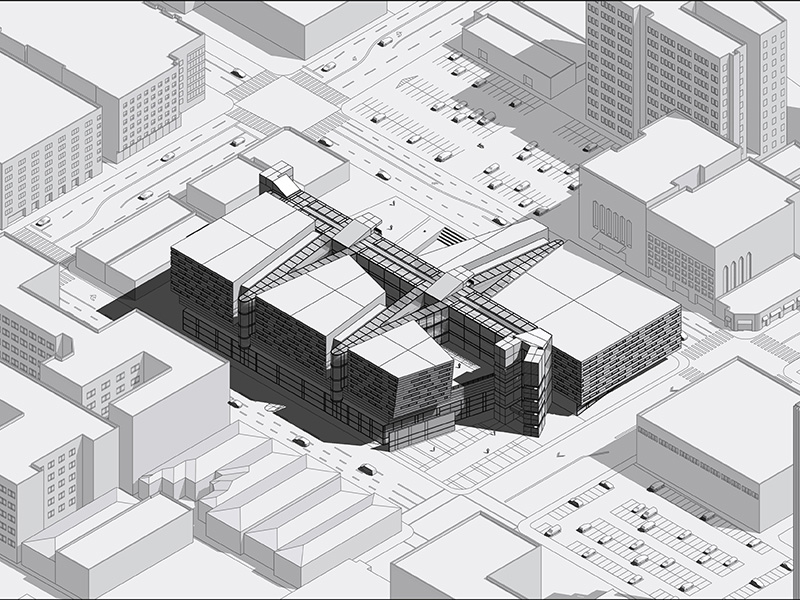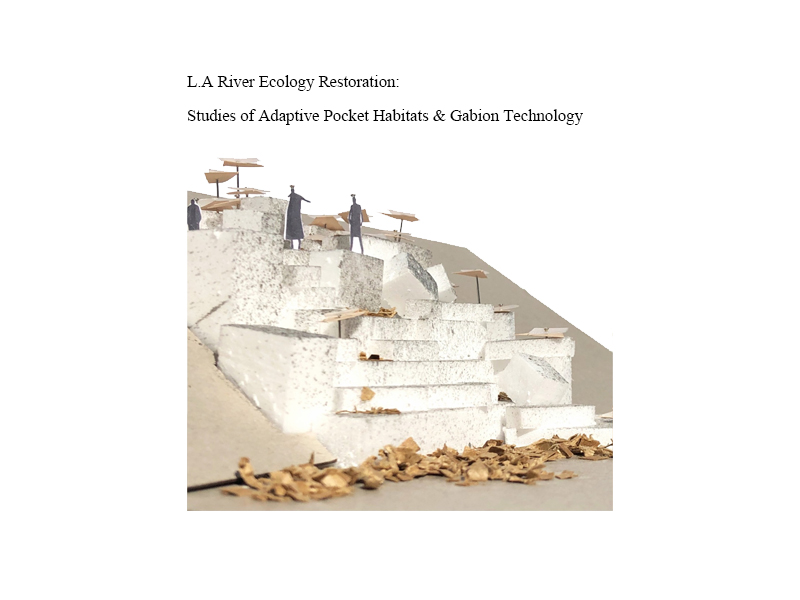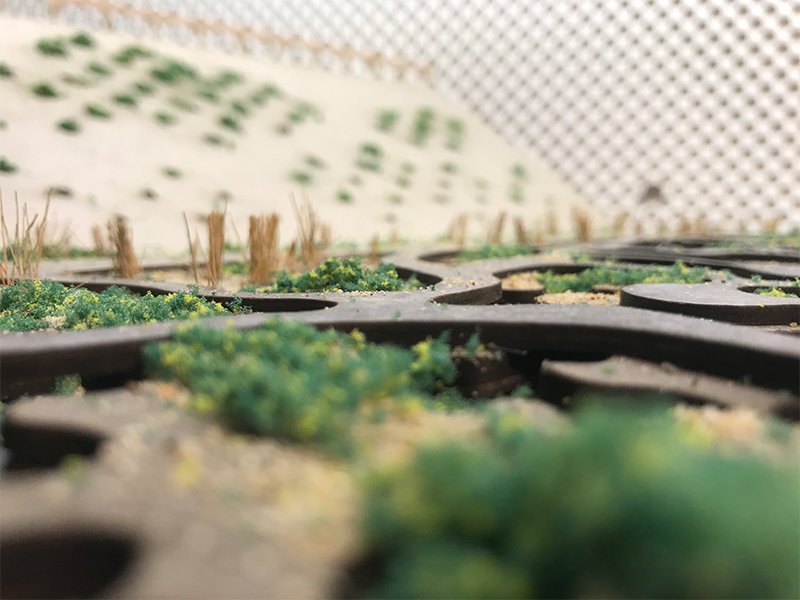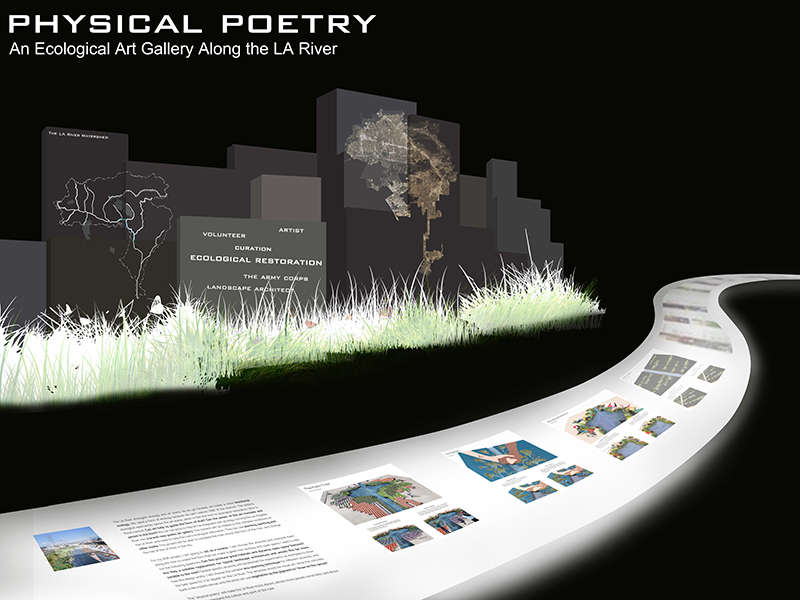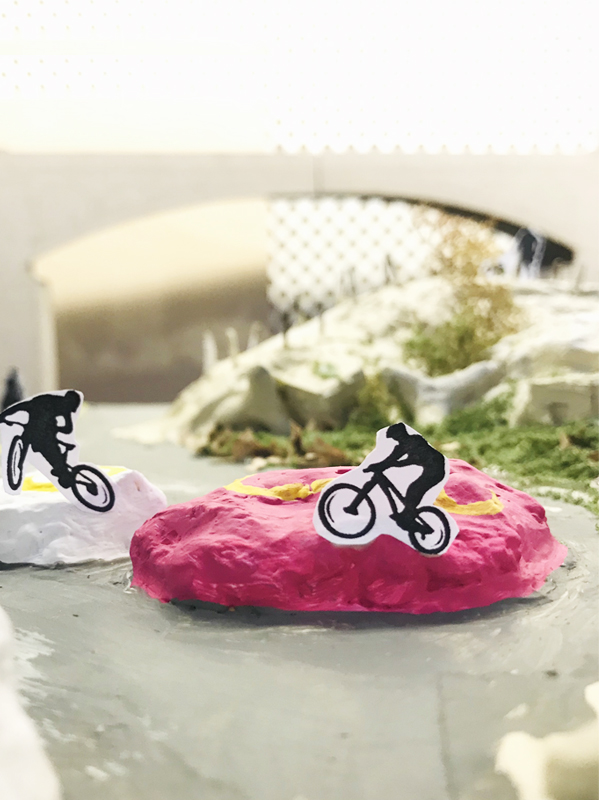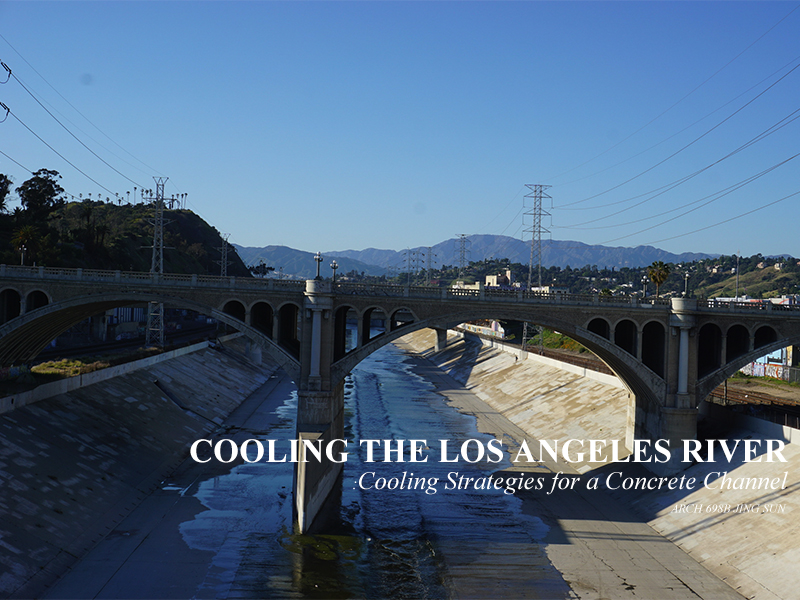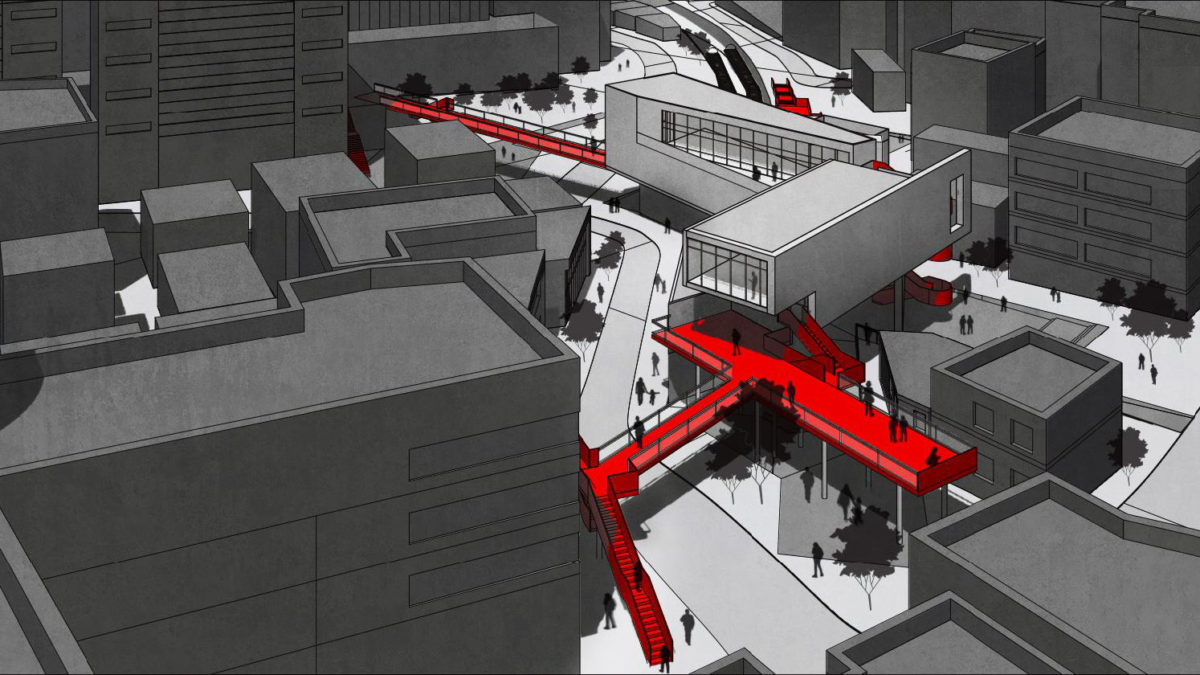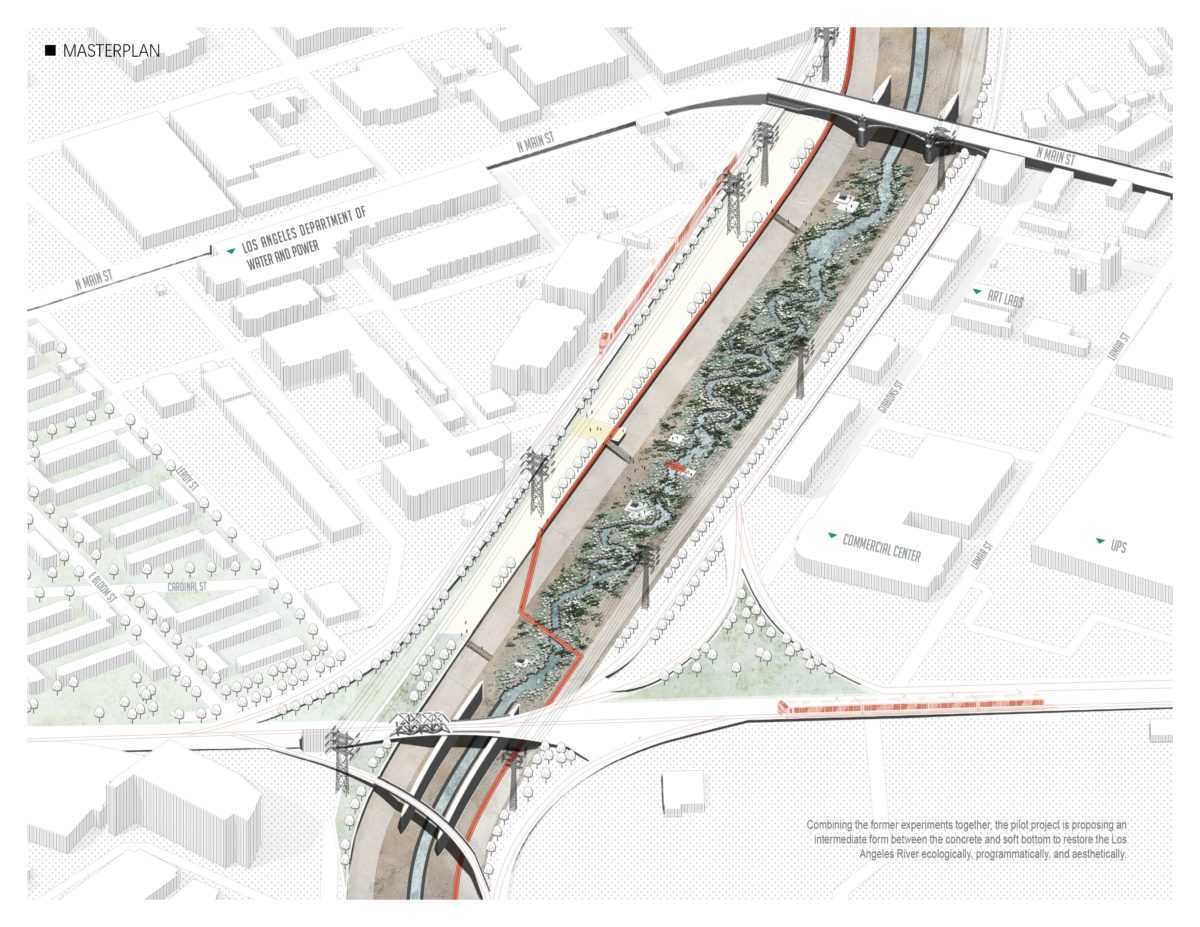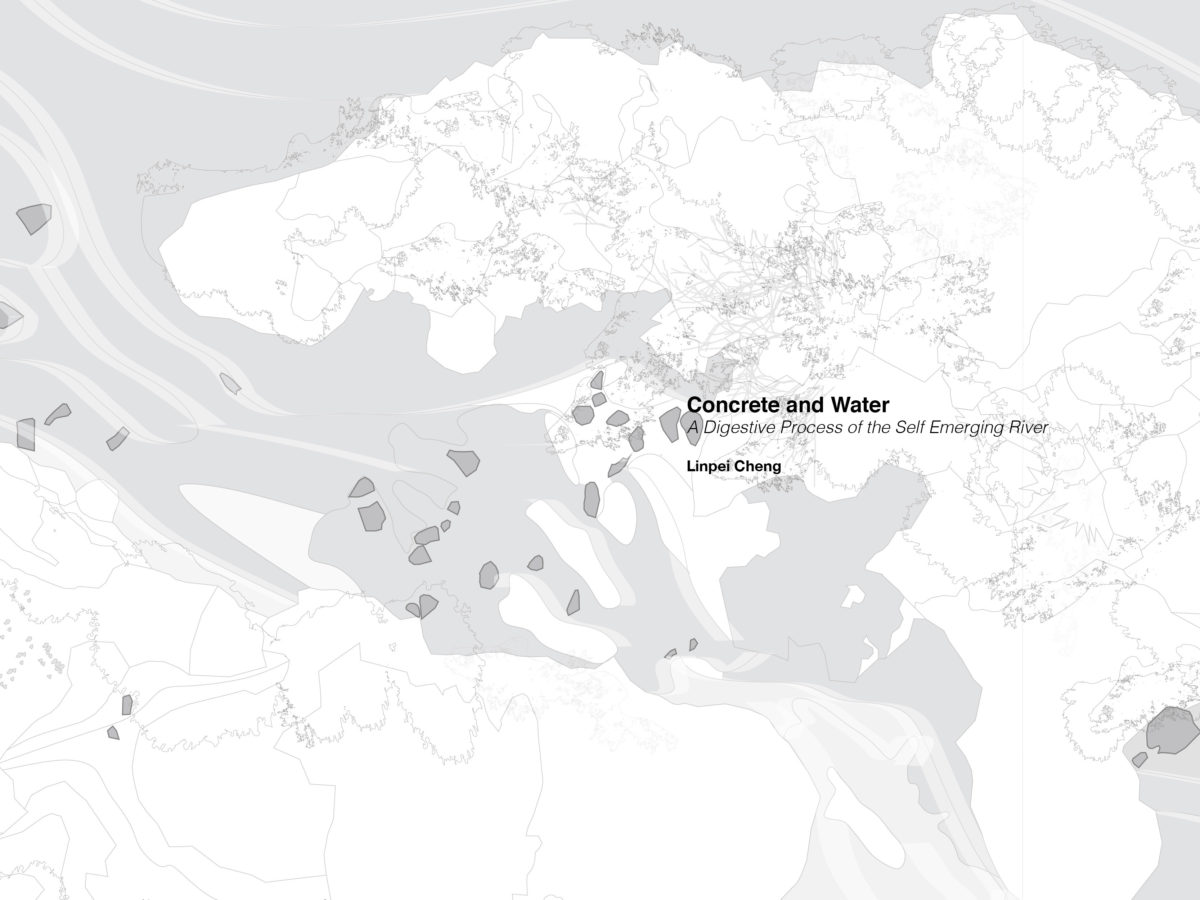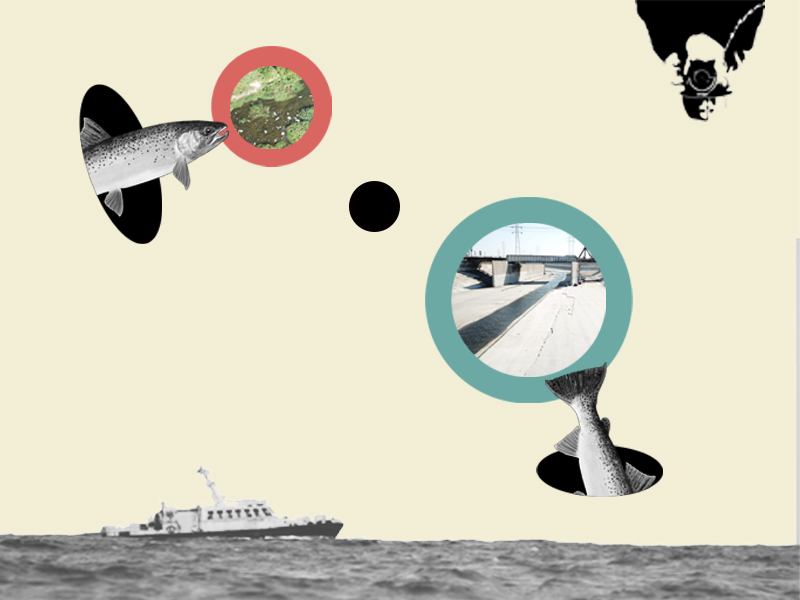The circulation organization of the building space, moving from dynamic to static in vertical and horizontal space. According to this principle, the space of the building is clearly divided. The circulation space in the middle is a continuous ramp and extends outward on the east side to connect with the outdoor playground. This allows the originally closed circulation space to be connected with the outdoors, and students can talk with each other and take activities outdoors through these ramps and platforms.
